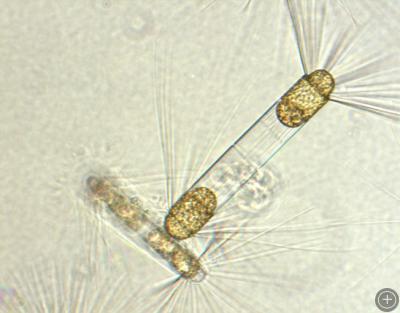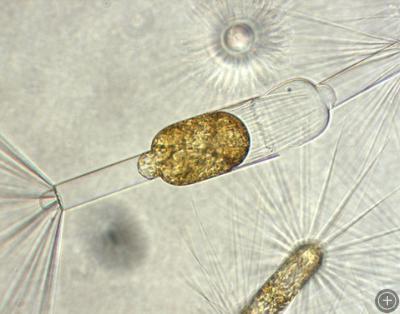Reproduction in Antarctic Diatoms
March 17th, 2009
ABOARD THE RVIB N. B. PALMER, ON THE SOUTHERN OCEAN– As most unicellular phytoplankton algae, diatoms usually reproduce by division. One cell becomes two after mitosis; the two new algae are called “daughter cells”. Once in a long while diatoms go through sexual reproduction. After meiosis the new daughter cells have a recombined genetic material. What brings this phenomenon? Some scientists think that the cell division (or asexual reproduction) produces silicon valves smaller and smaller until size can become a problem. Stress is another factor thought to affect reproductive strategy. Cells under unfavorable conditions for growth, when nutrients run out, undergo meiosis to increase their change of survival.
The dominant diatom around the C18A iceberg is undergoing sexual reproduction. It is easy to see this process under the microscope as Corethron criophilum is large and the changes are striking. In cell division two smaller cells are seen at the extremes of the valve in cingular view, or along the cylinder. The auxospore is produced after fertilization of male and female gametes, leaving the mother cell.
Is the iceberg affecting phytoplankton in such a way to start sexual reproduction? Or does Corethron criophilum under stress due to diminishing light days as the fall season advances? These are questions we are asking ourselves. Detailed analysis of samples under the microscope once we are home will shed light on the first question. The importance of changing season on Corethron criophilum cannot be assessed during a 40-day cruise. Several months of study in the field would be needed. This is a question that might remain open and maybe can be answered in future cruises.

 No comments
No comments 








